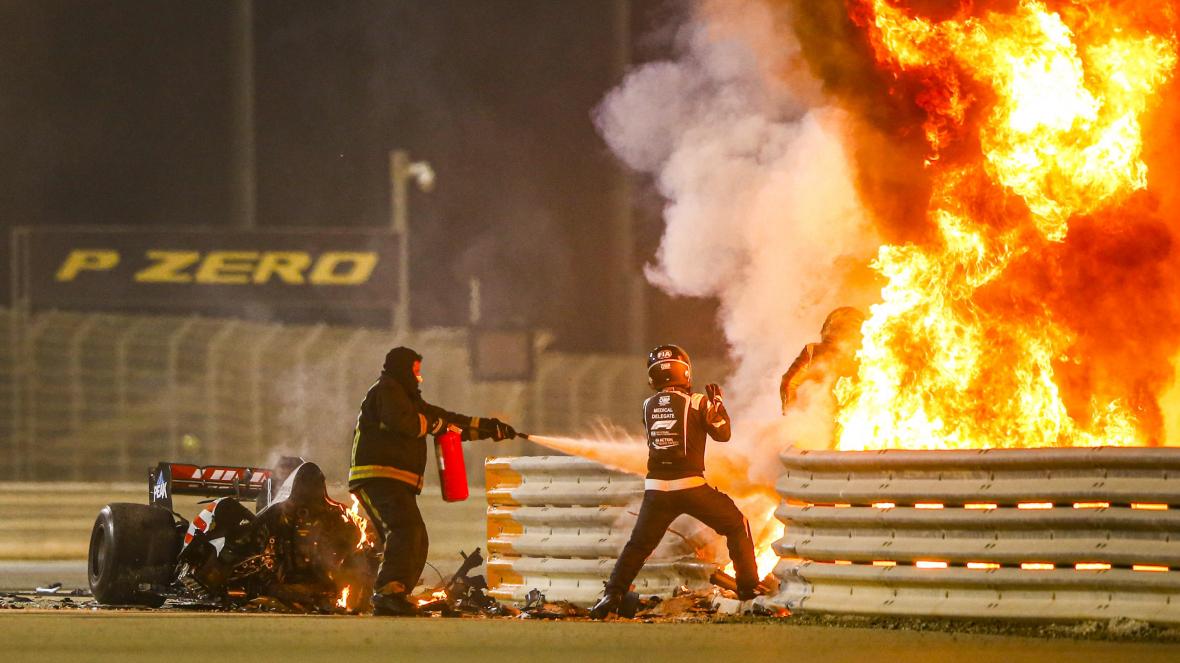If the COVID-19 pandemic wasn’t enough of a blow to the 2020 Formula One World Championship, the horrendous accident of the Bahrain Grand Prix last November, which saw Romain Grosjean surviving from a near-death experience, shook the motorsport fandom.
In the first lap at the Bahrain International Circuit, the French-Swiss driver of the Haas F1 team got into contact with Daniil Kvyat of AlphaTauri, before crashing his Haas VF-20 into the side barriers, the car broke into two parts and went up in flames.
Although he was able to climb out of the wreckage without sustaining any fractures, The horrific fireball mishap left Grosjean with second degree burns on hand and ankle burns.
Now, three months after the gruesome accident, FIA has come up with the results from the investigation behind Grosjean’s crash and why his VF-20 went up in flames immediately upon impact.
ALSO READ: Romain Grosjean wants F1 to conduct better assessment on how accidents impact the brain
Romain Grosjean’s crash brings forth several review and regulations of FIA’s single-seater designs

The governing body estimated in its report that Romain Grosjean suffered a 67 G impact after crashing at a speed of 192 kph (119 mph). The impact was 67 times of his own body weight and in comparison, harsh braking in an F1 car produces 6 Gs.
After impacting on the side barriers, the car’s power train assembly was separated from the survival cell. Moreover, the fuel tank inspection hatch was dislodged and the supply to the engine was ripped off, which allowed the escape of fuel from the tank.
The report further stated that the car had caught flames during the final moments of the impact, as it split into two. The fire started from the rear of the survival cell and progressed towards the front of car and Grosjean, who endured the flames for 28 seconds before finally escaping out of the cockpit.
The FIA, which took into consideration 18 other accidents that took place across all of its championships this year, will be reviewing the design of the safety fuel bladder installations in all of its single-seater categories, as well as updating the FIA standards, regulations for design, fuel homologation to make the bladder material more compatible, and all in all recommending best practices for safety fuel bladder installation.
The governing body will also regulate survival cell front geometry added with load testing, and will also review the steering column mounting requirements as Grosjean had his left foot stuck in the cockpit as he was trying to escape the wreckage.
“Important learnings have been drawn from these investigations that will drive our continuous mission to improve safety in Formula 1 and global motorsport,” FIA president Jean Todt was quoted in an official statement.
“The enduring commitment of the FIA, particularly the Safety Department, on reducing risks associated with motor sport enabled Romain Grosjean to maintain consciousness and survive an accident of this magnitude. Safety is and will remain FIA’s top priority,” Todt added.

